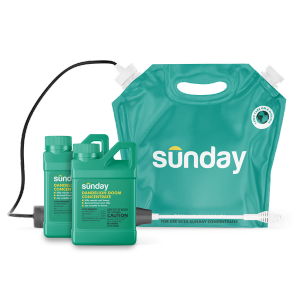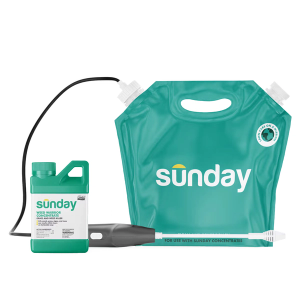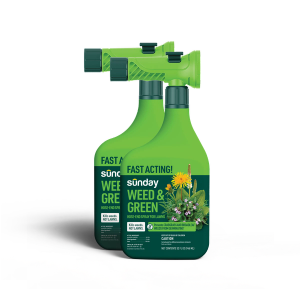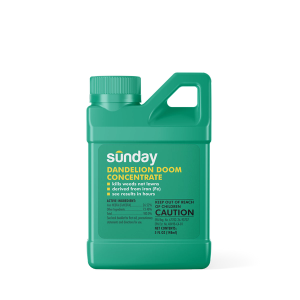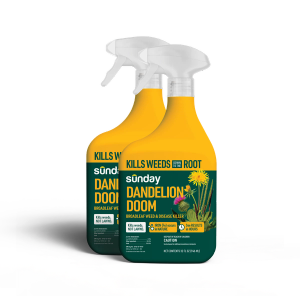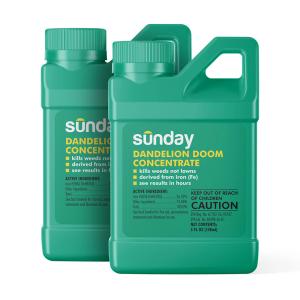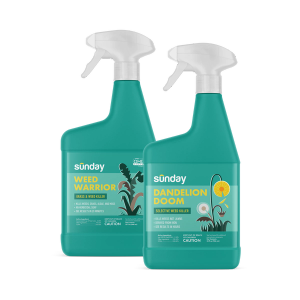When to apply granular lawn fertilizer
Apply lawn fertilizer in spring when daily average temps consistently hold above the right range for your grass type:
- Cool-season grasses require temperatures above 40-49° F.
- Warm-season grasses need temps above 60-69° F.
Apply when grass is actively growing and isn't stressed.
Find your custom lawn plan application dates
For best results, apply granular lawn fertilizer according to your custom plan. All Custom Lawn Plan application dates are on your My Plan account page.
Sunday Tip:
Psst. Don't have a custom lawn plan?
How to apply granular fertilizer
Set your spreader

Apply granular lawn fertilizer using a hand, drop, or push spreader for best results.
Start on your spreader's lowest recommended setting. Once you start applying, slowly increase the flow to a level that provides the proper coverage.
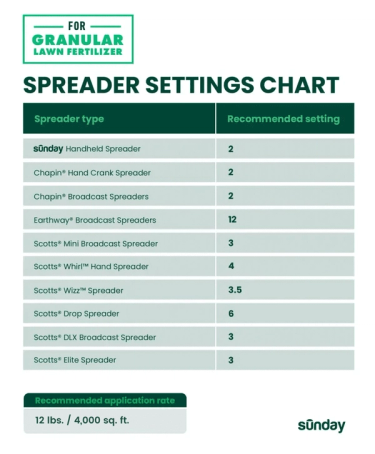
Sunday Tip:
Make sure your spreader is cleaned out from the previous year, or if it’s brand new—make sure you know how to adjust settings, and it’s ready to use.
Fill up spreader
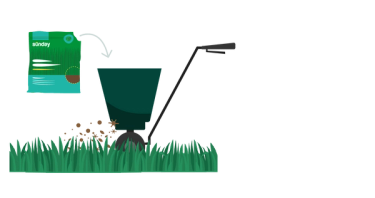
Fill your spreader to the top of the spreader or a manageable amount to push.
Remember: Keep the granular lawn fertilizer nearby. You'll need to refill your spreader periodically throughout the application as the spreader empties.
Sunday Tip:
If you spill any granular fertilizer on your lawn or the ground while filling the spreader, try to sweep it up, spread it out, or water it thoroughly to avoid burning or waste.
Spread uniformly

Apply at the recommended rate of 3 lbs. per 1000 square feet. Use the easy-to-follow application rates based on your lawn size found on the back of the package!
Helpful tips
- Walk in straight lines at a consistent pace to spread evenly across lawn
- If using a drop or push spreader, space wheel tracks about 3–4 feet apart to ensure full coverage.
- Refill the spreader as needed.
Water in & clean up
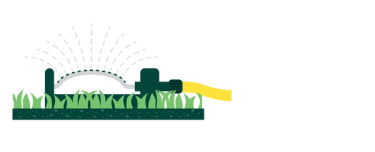
Thoroughly water in dry granular fertilizer across your lawn after applying. This not only helps nutrients break down into the soil, but avoids the risk of fertilizer burn!
To clean up: Sweep up any granular fertilizer that has fallen onto non-growing areas such as sidewalks or driveways to reduce opportunities for runoff.
Let it dry

You can get back on your lawn as soon as it dries.
Check your My Plan account page to see your next application date.
Granular lawn fertilizer application tips
- Thoroughly water in after application to avoid risk of lawn burn
- Only apply to actively growing grass
- Don't apply to wet, heat-stressed, or drought-stressed lawns
- Avoid applying granular fertilizer too late into the fall season
- Avoid applying near water bodies, storm drains, or drainage ditches
- Use product label for application instructions and best practices
Let's get growing
Our lawn engine uses satellite data to map out your lawn size and determine things like average rainfall, common weeds, and pest activity.
Granular lawn fertilizer FAQs
How much does one bag cover?
One 12-pound bag covers 4,000 square feet. This is about the size of two tennis courts.
How do I use this with other Sunday products?
Sunday granular fertilizers are made to work with Sunday lawn products, custom plans, and other products. When applying with other Sunday products, let granular fertilizer applications dry completely before applying anything else to the lawn.
For best results, use in combination with fertilizer, weed control, and grass seed. This will help you feed properly, reduce weeds, and introduce better grasses to your lawn.
How do I switch from liquid to granular fertilizer?
Avoid using granular and liquid fertilizers at the same time. This can lead to over-fertilization or burning of grass. If you switch between granular and liquid fertilizer, wait at least 4-6 weeks between applications.
When should I stop fertilizing?
Stop fertilizing in the fall—sometime between the end of September and mid-October when temperatures cool down and lawns are no longer actively growing.
How should I store granular fertilizer?
Store this product upright with the bag sealed tightly. Avoid storing in areas where kids, pets, or pests could potentially access it, and avoid storing in areas with excessive moisture.






